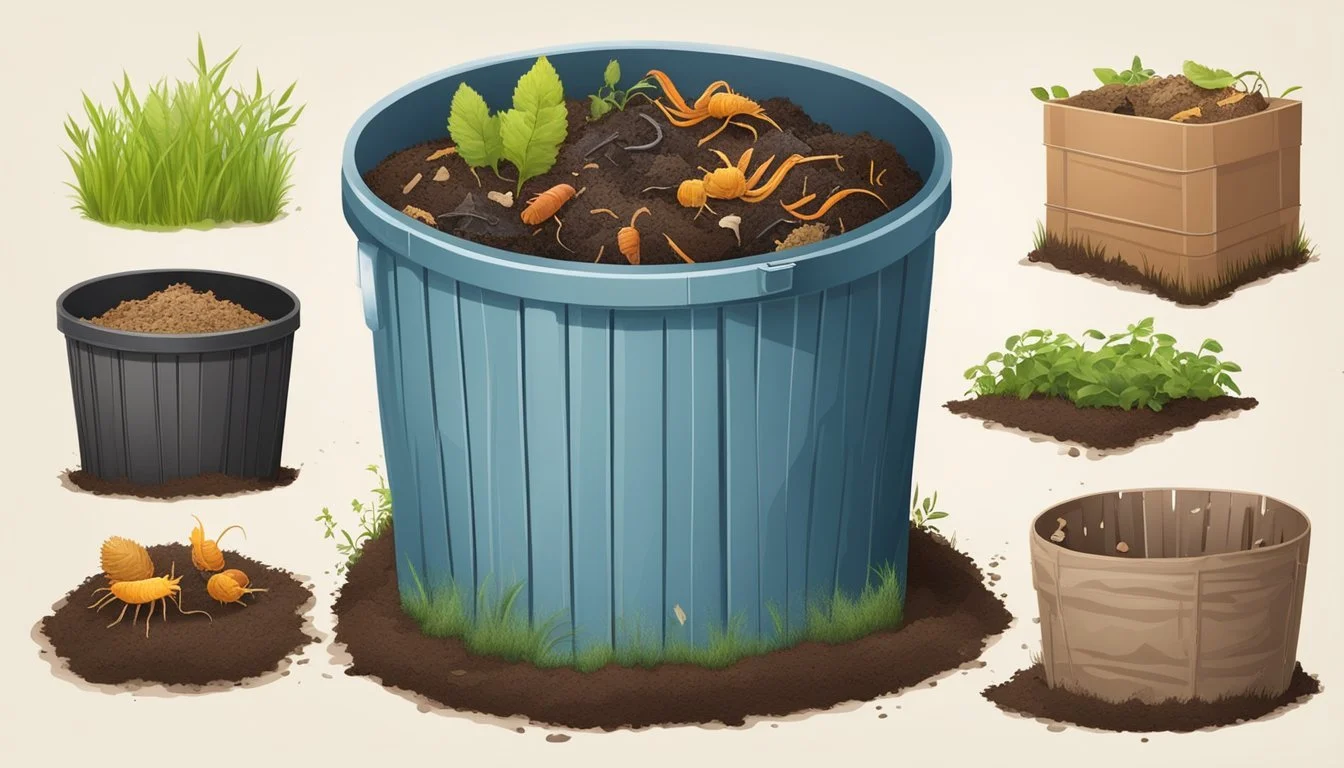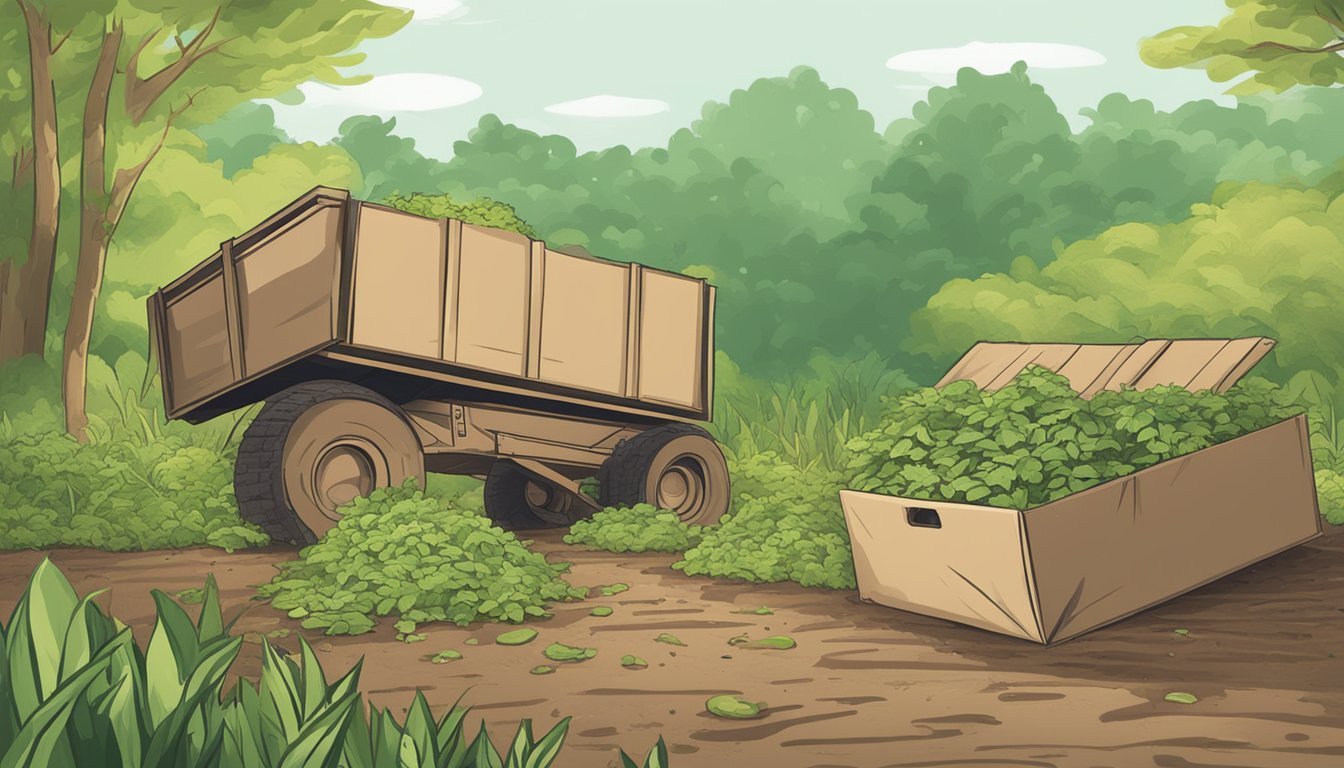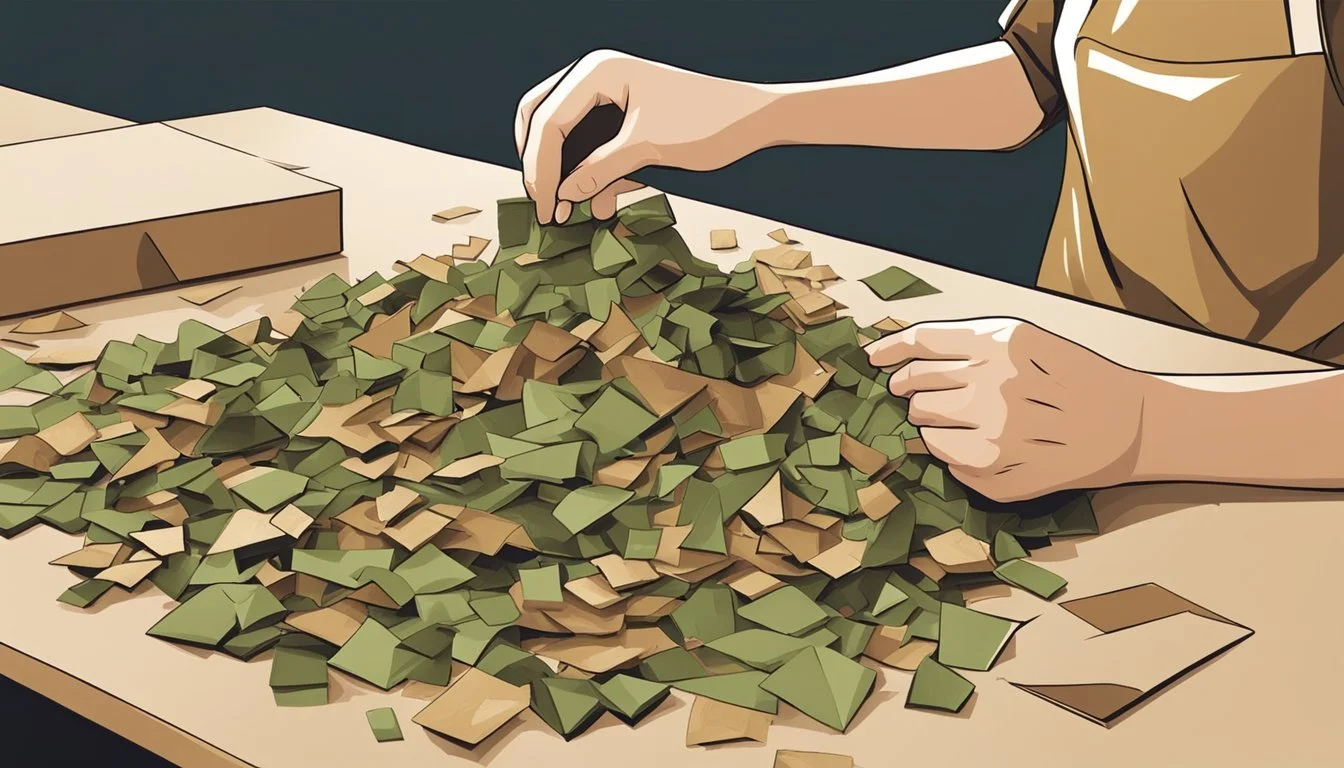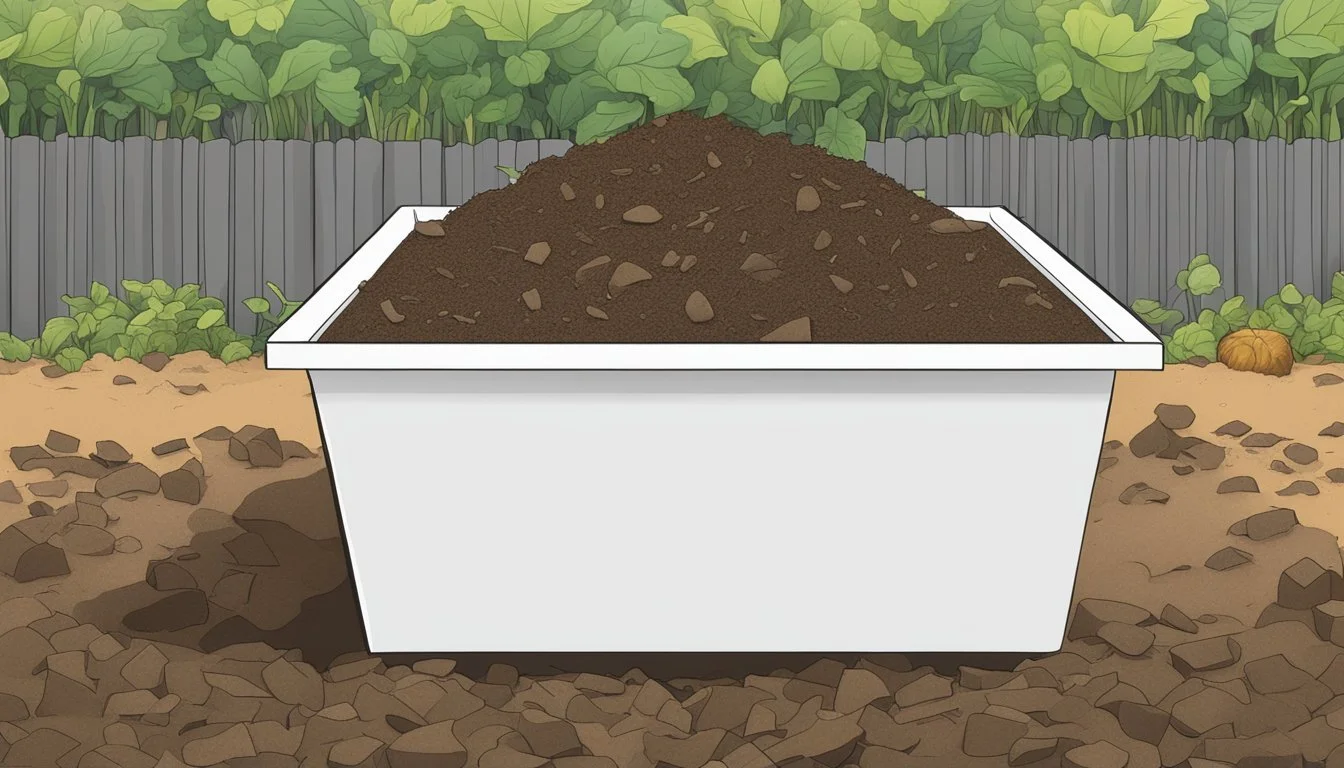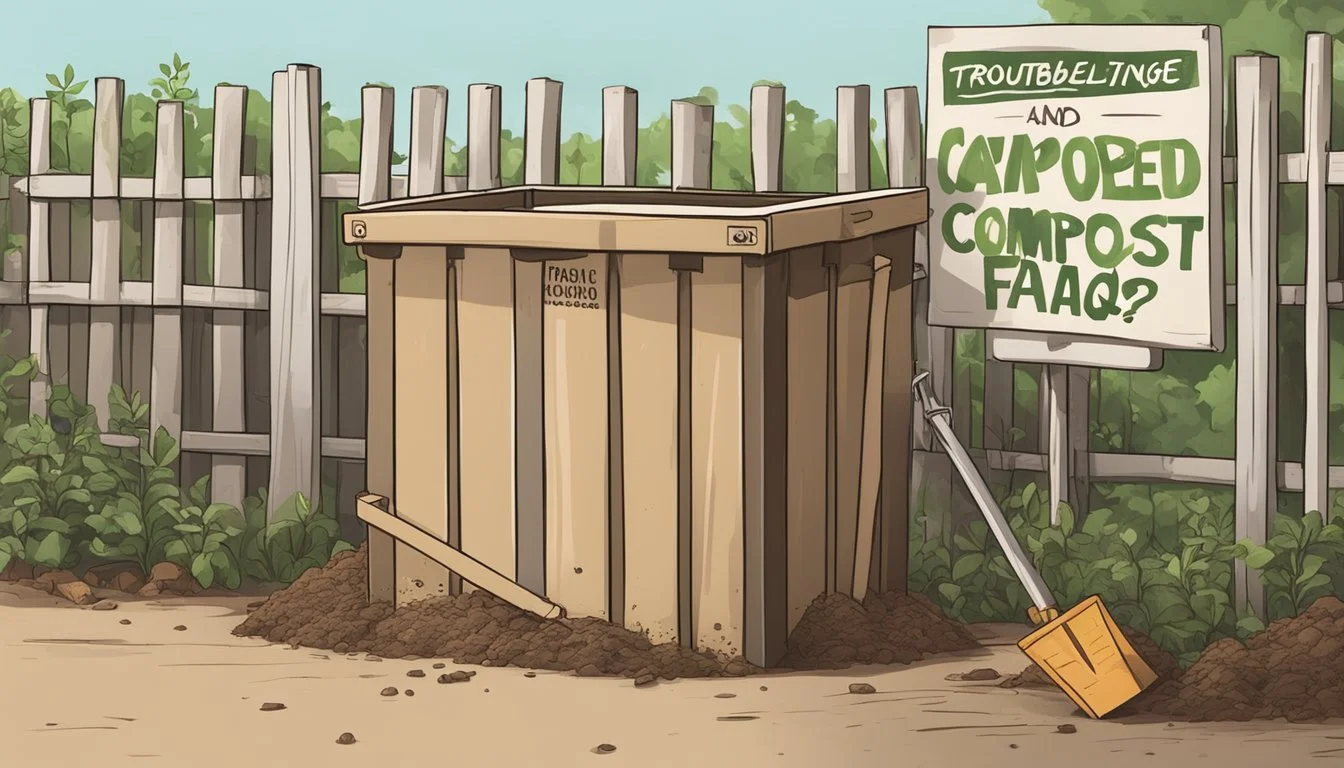Can You Compost Waxed Cardboard?
Debunking Myths & Facts
Composting cardboard is a widely accepted practice, beneficial for reducing landfill waste and enhancing soil health. Cardboard, being a form of paper, is typically composed of cellulose fibers which break down into organic matter. Many gardeners and environmentally conscious individuals incorporate cardboard into their compost piles as a source of carbon, which, when balanced with nitrogen-rich materials, fosters an effective composting process.
However, waxed cardboard stands as an exception in the realm of compostable materials. The wax coating, often applied to boxes for transporting produce and other goods requiring moisture protection, acts as a barrier to the microbial activity necessary for decomposition. Consequently, waxed cardboard does not break down as efficiently in a composting environment, potentially leading to contamination with non-biodegradable materials.
While standard, unwaxed cardboard is a valuable addition to compost, care should be taken to avoid introducing waxed cardboard into the composting system. This distinction is crucial for maintaining a healthy and productive composting process, and contributes to the overall goal of a sustainable cycle of organic waste reuse.
Understanding Composting Basics
Composting is an essential process for converting organic material into beneficial soil amendment. It involves managing the breakdown of this material by microorganisms under controlled conditions.
What is Compost?
Compost is a nutrient-rich soil amendment produced through the natural process of organic material decomposition. Essentially, it is decomposed organic matter that has been recycled as a fertilizer and soil conditioner, enhancing soil structure and providing essential nutrients.
The Decomposition Process
Decomposition is at the heart of composting, driven by microorganisms such as bacteria, fungi, and actinomycetes. These organisms break down organic material into simpler substances. Factors like moisture, oxygen levels (aeration), temperature, and the physical structure of the materials all impact the efficiency of the process.
Carbon-to-Nitrogen Ratio
In composting, the balance of carbon and nitrogen is crucial. Materials high in carbon, often brown and dry, provide energy for microorganisms, while nitrogen-rich materials, typically green and wet, supply proteins. A carbon-to-nitrogen ratio (C ratio) of about 30:1 is ideal for rapid composting.
Carbon-Rich "Browns" Nitrogen-Rich "Greens" Dried leaves Food scraps Straw Grass clippings Sawdust Manure
Composting Methods
There are various methods of composting, ranging from simple compost heaps or piles in a garden to structured systems like compost bins. Each method involves assembling a blend of organic materials in a way that encourages decomposition while allowing for moisture retention and aeration.
Properties of Cardboard
Cardboard varies in form and composition, which determines its suitability for specific uses including recycling and composting.
Types of Cardboard
There are several types of cardboard, each with distinct characteristics:
Corrugated Cardboard: Consists of a fluted corrugated sheet and one or two flat linerboards. It is strong, durable, and commonly used in packaging.
Boxboard or Paperboard: Often used for cereal boxes and other lightweight boxes. It is not corrugated and is less durable than corrugated cardboard.
Waxed Cardboard: A waterproof cardboard typically used for transporting fresh produce. It has a wax coating that impedes biodegradability.
Cardboard Composition
Cardboard is primarily made from pulped wood or recycled paper products. The composition of cardboard generally includes:
Cellulose Fibers: The main structural component of cardboard, providing rigidity and strength.
Lignin and Hemicellulose: Bind the cellulose fibers together.
Additives: Such as inks and waxes, can affect cardboard's recyclability and biodegradability.
Corrugated cardboard often contains a high percentage of recycled content, making it more environmentally friendly. However, the recyclability of cardboard depends on how clean it is. Contaminants such as grease, food residue, or heavy printing can complicate the recycling process.
Most cardboard types are biodegradable if they are not coated with substances like wax. In contrast, waxed cardboard requires special treatment to separate the wax from the paper fibers to become suitable for composting or recycling.
Composting Cardboard Challenges
Composting cardboard can be a sustainable practice, but specific challenges can hinder the process. Identifying and understanding these hurdles is crucial to successful composting.
Barriers to Decomposition
Factors such as material composition and environmental conditions can significantly slow down the decomposition of cardboard. Moisture, temperature, and the presence of microorganisms play vital roles in breaking down cardboard fibers. If the balance is not right, the decomposition can stall, causing issues in the composting process.
Moisture Level: Too little moisture prevents microorganisms from thriving, whereas too much can cause anaerobic conditions, leading to odor and a slower breakdown.
Temperature: A compost pile must maintain a certain temperature range to promote microbial activity and decomposition.
Microbial Presence: A lack of beneficial bacteria and fungi will impede the process since these organisms are essential for breaking down organic materials.
Issues with Waxed Cardboard
Not all cardboard is equal in the eyes of composting, with waxed and coated variations posing particular issues. Waxed cardboard is designed to be water-resistant, which means it does not break down as readily as non-coated, non-waxed cardboard.
Waxed and Coated Cardboard: These materials often contain a layer of plastic or paraffin, which is not biodegradable and can persist in the environment.
Shiny Cardboard: The "shiny" aspect usually indicates a polymer coating meant for aesthetics or functionality, which can also interfere with composting.
Common Contaminants
Cardboard products often come with contaminants that can harm the quality of compost or render it unusable.
Labels and Tape: Often contain non-biodegradable adhesives and plastics.
Grease: Common in pizza boxes and other food packaging, can attract pests and is difficult to break down.
Heavy Dyes and Chemicals: May introduce toxins into the compost pile.
Plastic: Sometimes used in cardboard products for strength or moisture resistance, does not decompose and should be removed prior to composting.
Preparation of Cardboard for Composting
The effectiveness of composting cardboard hinges on appropriate preparation, a process that involves sorting, size reduction, and moisture adjustment, ensuring a seamless integration into the compost pile.
Sorting and Removing Contaminants
Before adding cardboard to a compost pile, it must be sorted to remove non-compostable materials such as staples, stickers, and plastic coatings. Cardboard, typically divided into corrugated and flat types, should be assessed for suitability; wax-coated cardboard like some produce boxes often cannot be composted. Pizza boxes can be composted if they are free from grease and food residue. Similarly, clean egg cartons and toilet paper rolls are acceptable, as they are generally made from compost-friendly materials.
Shredding and Cutting
Once sorted, cardboard should be broken down into smaller pieces to expedite decomposition. Shredded cardboard absorbs moisture more effectively and provides a greater surface area for microbial action. Using scissors or a shredder, reduce the size of cardboard to pieces no larger than two inches squared. Corrugated cardboard requires less shredding due to its fluted layer, promoting better airflow and faster breakdown.
Correct Moisture Levels
Strike a balance in the moisture content of the compost pile to ensure efficient decomposition. The pile should feel like a damp sponge—moist but not soggy. To achieve this, one can lightly dampen the shredded cardboard with water if it is too dry before adding it to the pile. However, too much moisture can cause compaction, especially with cardboard, reducing necessary airflow for the composting microorganisms.
Composting Process
The composting process is an organized method of transforming organic waste into nutrient-rich soil amendments. This section delves into the key stages of composting, ensuring a successful breakdown of materials, including considerations for waxed cardboard.
Layering and Mixing
Optimal composting requires layering and mixing of greens, such as food scraps and grass clippings, and browns, like leaves and non-waxed cardboard. A common strategy is to start with a brown layer, followed by a green layer, and repeat. The ratio is crucial, with a recommended balance of 3:1 (browns to greens). This promotes airflow and quicker decomposition:
Browns: Provide carbon, includes leaves, straw, non-waxed cardboard
Greens: Supply nitrogen, includes food scraps, coffee grounds, manure
Balancing Greens and Browns
The ratio of greens to browns is vital for maintaining a healthy compost pile. Greens provide nitrogen and include materials such as fruit peels and food scraps, while browns offer carbon, encompassing dry leaves, twigs, and paper towels. A balanced compost pile should have more browns than greens to prevent odor and pests. A table to understand balance:
Material Type Examples Purpose Greens Food scraps, grass clippings Nitrogen source, moisture Browns Leaves, paper towel, non-waxed cardboard Carbon source, aeration
Monitoring Compost Progress
They should regularly monitor the compost pile for moisture, temperature, and material breakdown. The pile needs to stay as damp as a wrung-out sponge; if it's too dry, microbial activity slows, and if too wet, it can become anaerobic and smelly. Turning the pile every few weeks introduces oxygen, which is essential for composting. Progress can be gauged by the reduction in volume and the presence of earthy-smelling, dark material at the bottom of the pile, indicating finished compost ready to use as mulch in the garden.
End-Use of Compost
The final stage in the composting process is the application of the resulting material to support soil and plant health. The quality of compost significantly influences its utility and effectiveness when introduced to various ecosystems or garden settings.
Benefits to Soil and Plants
Soil Structure: Compost improves soil structure, making it more porous for better water retention and drainage.
Nutrient Content: It adds essential nutrients that feed the soil and, subsequently, the plants.
Microbial Activity: The introduction of compost enhances microbial activity, which is critical for nutrient uptake by plants.
Less Dependency on Chemical Fertilizers: Gardens benefit from compost's slow-release of nutrients, reducing the need for synthetic fertilizers.
Disease Suppression: The beneficial microorganisms in compost can help suppress soil-borne diseases.
Reduced Landfill Waste: Using compostable materials like non-waxed cardboard as mulch can divert waste from landfills.
Using Compost in Your Garden
As Mulch: Spread compost around plants to help retain moisture, regulate soil temperature, and suppress weed growth.
Soil Amendment: Integrate compost into the garden soil to fortify it with organic matter and improve fertility.
Potting Mix: Combine compost with other potting materials to create a high-quality mix for container-grown plants.
Erosion Control: Apply compost on sloped areas of the garden to prevent topsoil erosion.
By considering these applications, gardeners embrace the full circle of sustainability, turning what was once waste into a valuable resource for their plants and soil.
Troubleshooting and FAQs
Catering to common inquiries on composting waxed cardboard and providing practical advice ensures a successful composting experience. This section addresses common issues, goes through frequently asked questions, and offers solutions and tips.
Common Issues
Excess Moisture: Waxed cardboard can trap moisture, potentially leading to an overly waterlogged compost pile.
Worms and Vermicomposting: Certain composting methods, like vermicomposting, may be impacted negatively by the addition of waxed cardboard, as it can hinder the worms' activity.
Waxed Cardboard FAQs
Can waxed cardboard be composted? The United States Environmental Protection Agency (EPA) suggests that most coated or treated cardboard should generally be avoided in composting.
Are there any benefits of composting waxed cardboard? While composting typical cardboard adds carbon and helps balance green waste, waxed variants may not decompose effectively.
Solutions and Tips
Dealing with Excess Moisture: If excess moisture is a concern, balance it by adding more brown materials, like dry leaves or untreated cardboard.
Yard Waste Management: Combine yard waste with cardboard sans wax to enhance the compost structure and aeration.
Compost Tumblers Use: For those using a compost tumbler, regularly turn the pile to ensure that any waxed cardboard included is adequately exposed to decomposing agents.
Environmental Impact and Best Practices
Managing cardboard waste efficiently is crucial for environmental health. Waxed cardboard, in particular, presents specific challenges in waste management due to its mixed composition.
Cardboard in Landfills
Cardboard represents a significant portion of municipal solid waste. When they accumulate in landfills, cardboard materials contribute to methane emissions, a potent greenhouse gas. Waxed cardboard, which is often not recyclable due to its wax coating, can increase the volume of landfill waste.
Recycling vs. Composting Cardboard
Recycling cardboard is a common practice, but the wax coating on some cardboard makes it ineligible for recycling. On the other hand, composting can be a viable option, turning cardboard into nutrient-rich soil. However, it's important to note that while unwaxed cardboard is widely accepted in composting facilities, waxed cardboard is typically rejected because the wax can impede the composting process and may introduce contaminants.
Best Practices in Cardboard Composting
Best practices for composting cardboard include:
Ensuring Cardboard is Unwaxed: Only compost cardboard that lacks a shiny, wax-like coating.
Shredding or Cutting: Smaller pieces decompose more quickly.
Maintaining Proper Balance: Cardboard should be balanced with nitrogen-rich materials in compost to optimize decomposition.
Compostable packaging can offer a more sustainable alternative, designed to break down effectively in composting systems without the need for separation or special treatment.



